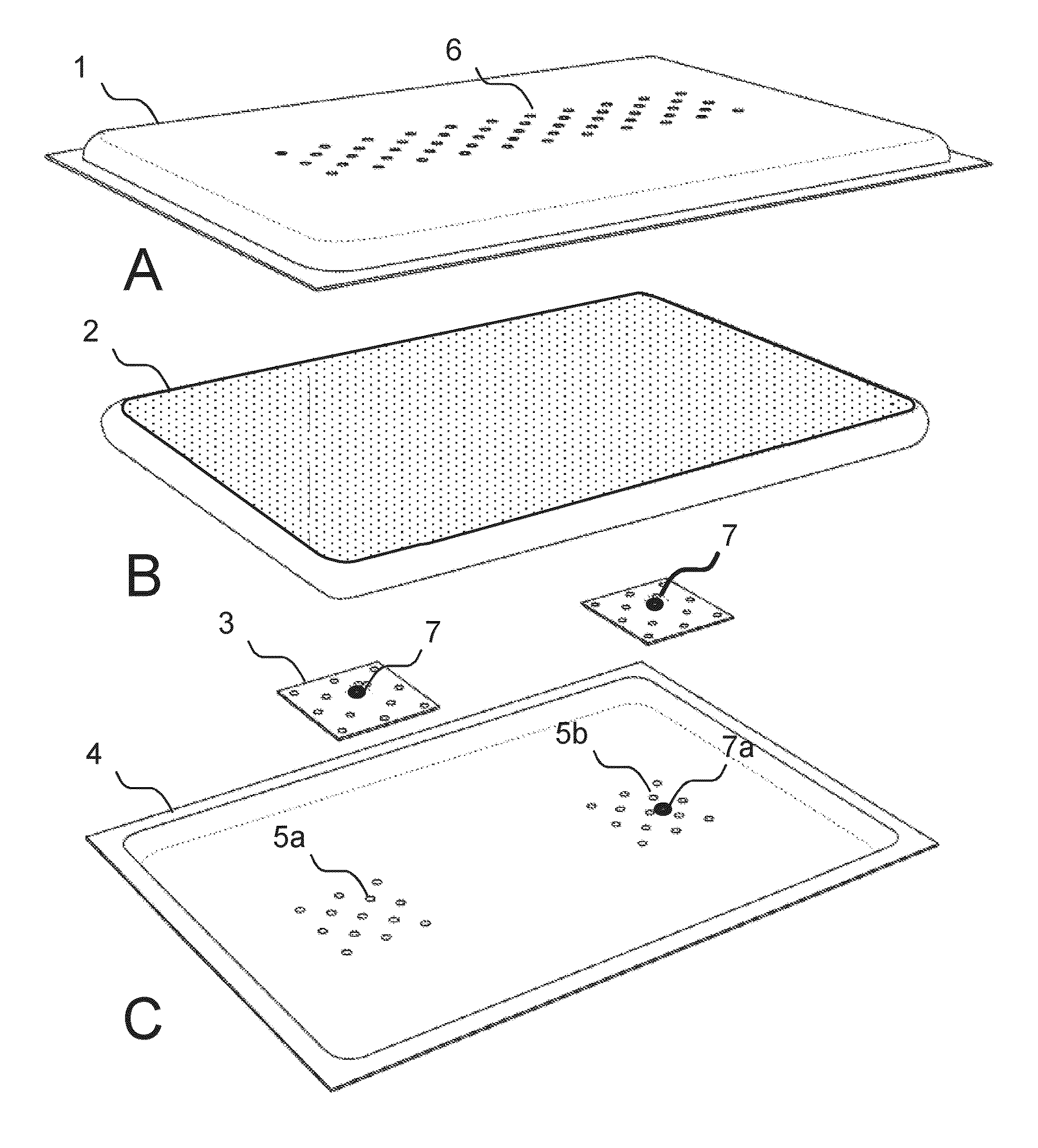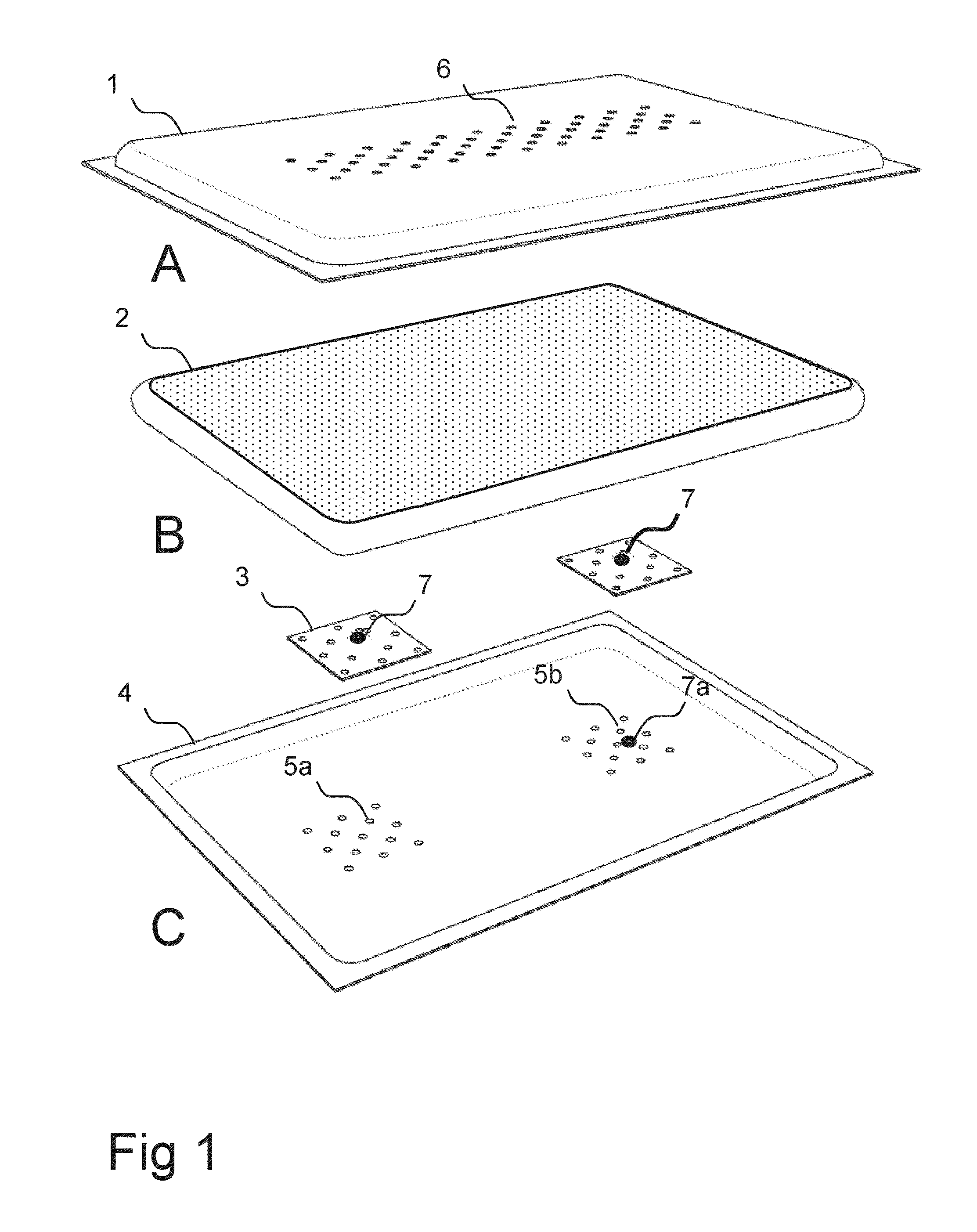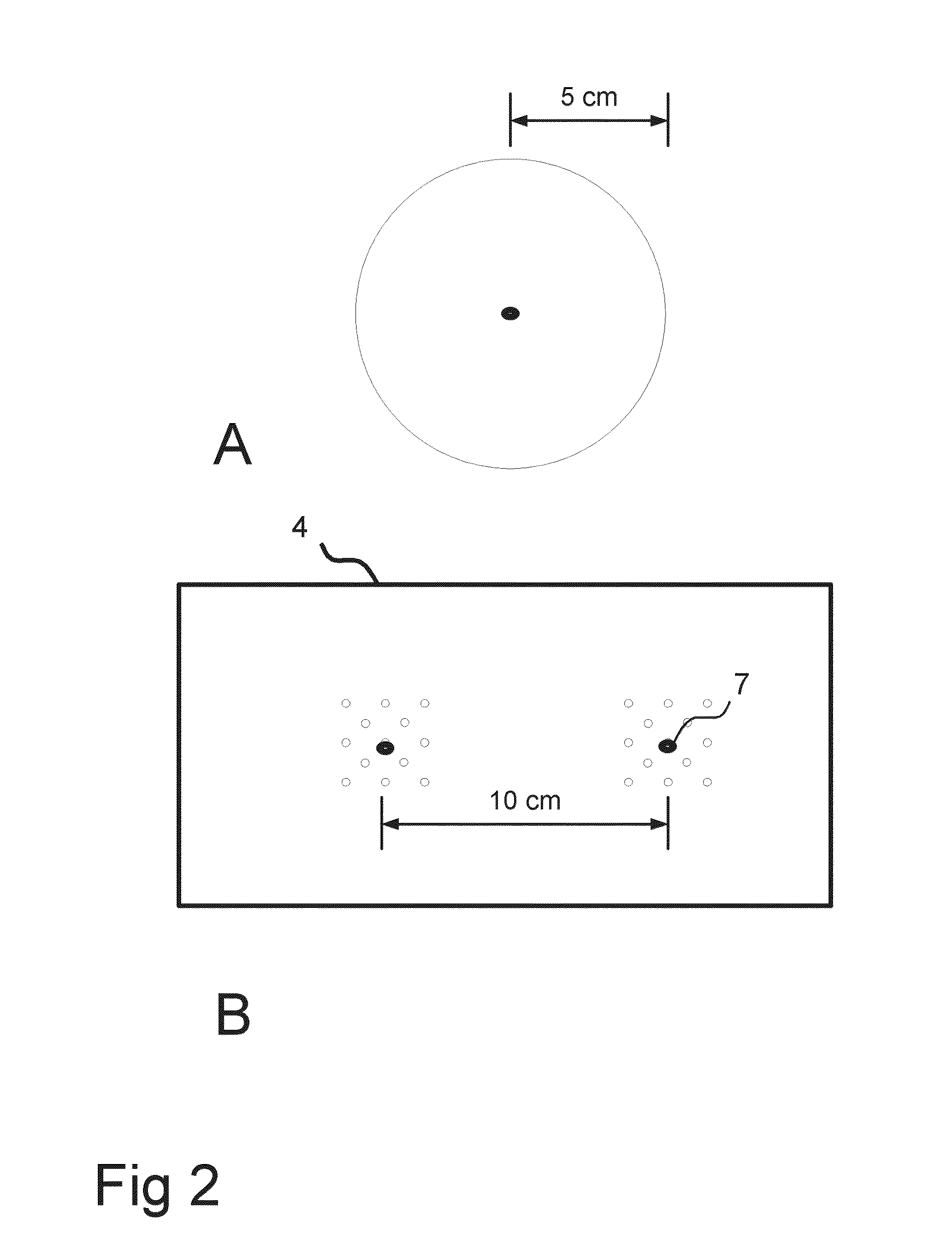Sowing unit and uses thereof
- Summary
- Abstract
- Description
- Claims
- Application Information
AI Technical Summary
Benefits of technology
Problems solved by technology
Method used
Image
Examples
example 1
[0203]Production of L-Arginine Doped Vermiculite
[0204]For the following experiment 55 g of L-arginin was dissolved in 1000 ml water. To this solution 60 gram vermiculite was added and stirred for one hour in room temperature. After stirring, the vermiculite was removed by vacuum filtration followed by drying at 40° C. for one hour. This gives a nitrogen concentration of approximately 5% in the produced doped vermiculite. Other concentrations of nitrogen has also been used, see the following experiments for details.
example 2
[0205]Verification of Binding of Nutrients to Vermiculite
[0206]Arginine doped expanded vermiculite with L-arginine with a content of 10.3% L-arginine by weight was used for the experiment. Thirty millilitre of the L-arginine doped vermiculite was placed in funnel with a filter paper in the bottom. Water was added stepwise, 30 ml, at each time, and the conductivity was measured in flow-through solution after each addition of 30 ml water. The results are summarized in table 1 below.
Conductivity (μS / cm) measuredVolume wateron flow-through solutionadded (ml)ArgininNH4NO3KNO33011.353.148.36012.057.654.69010.440.839.31208.513.8181505.512.615.318058.38.62104.3772403.55.65.827034.24.53002.83.92.73302.833.33602.52.53.23902.52.51.74201.51.91.74501.21.71.448011.51.45100.91.215400.81.10.7
[0207]The results clearly show that L-arginine bind stronger to vermiculite than the other nutrients. Conductivity does not discriminate between negatively or positively charged ions. Thus, it is a good estimat...
example 3
[0208]Increased Germination Rate by Using Arginine Doped Vermiculite
[0209]In most commercial plant production fertilization is a key factor. Fertilization can be carried out in several ways with respect to dosage, timing, frequency etc. One fertilizing strategy is to pre-fertilize the growth substrate before sowing or rooting of cuttings. With pre-fertilization it is possible to load the growth substrates with relatively large amounts of nutrients. The amount of nutrients should be enough to sustain plant growth for a longer time, thus eliminating the need for continuous fertilization which in turn saves work, and in rejuvenation of forests it is not practically possible at all. However, a key issue when pre-fertilizing any plant substrate with large amounts of fertilizer is the risk of salt stress, affecting germination and seedling development.
[0210]In the following experiment, L-arginine doped vermiculite was used in a pre-fertilization trial. As a reference treatment ammonium do...
PUM
| Property | Measurement | Unit |
|---|---|---|
| Length | aaaaa | aaaaa |
| Size | aaaaa | aaaaa |
| Hygroscopicity | aaaaa | aaaaa |
Abstract
Description
Claims
Application Information
 Login to View More
Login to View More - R&D
- Intellectual Property
- Life Sciences
- Materials
- Tech Scout
- Unparalleled Data Quality
- Higher Quality Content
- 60% Fewer Hallucinations
Browse by: Latest US Patents, China's latest patents, Technical Efficacy Thesaurus, Application Domain, Technology Topic, Popular Technical Reports.
© 2025 PatSnap. All rights reserved.Legal|Privacy policy|Modern Slavery Act Transparency Statement|Sitemap|About US| Contact US: help@patsnap.com



